 W
WA laptop or laptop computer, is a small, portable personal computer (PC) with a "clamshell" form factor, typically having a thin LCD or LED computer screen mounted on the inside of the upper lid of the clamshell and an alphanumeric keyboard on the inside of the lower lid. The clamshell is opened up to use the computer. Laptops are folded shut for transportation, and thus are suitable for mobile use. Its name comes from lap, as it was deemed to be placed on a person's lap when being used. Although originally there was a distinction between laptops and notebooks, as of 2014, there is often no longer any difference. Today, laptops are commonly used in a variety of settings, such as at work, in education, for playing games, web browsing, for personal multimedia, and general home computer use.
 W
WA 2-in-1 PC, also known as convertible laptop, 2-in-1 tablet, 2-in-1 laptop, 2-in-1 detachable, laplet, tabtop, laptop tablet, or simply 2-in-1, is a portable computer that has features of both tablets and laptops.
 W
WAcer Aspire is a series of personal computers by Acer Inc. aimed at casual household users. The Aspire series covers both desktop computers and laptops. Acer developed the series to range from essentials to high performance. The Aspire mainly competes against computers such as Asus' Transformer Book Flip, VivoBook and Zenbook, Dell's Inspiron and XPS, HP's Pavilion, Spectre and Envy, Lenovo's IdeaPad, Samsung's Sens and Toshiba's Satellite.
 W
WAcer Aspire is a series of personal computers by Acer Inc. aimed at the casual household user or for small business use. The Aspire series covers both desktop computers and laptops. Acer developed the series in order to cover from essentials to high performances.
 W
WAcer Predator is a gamer-focused brand and line of computer hardware owned by Acer. In 2008, Acer introduced itself in the gaming computer market with a line of desktop computers: the Acer Aspire Predator series, later renamed as Acer Predator. The series is characterized by the futuristic computer chassis and high performance. In 2016, a complete range of Predator desktops, gaming notebooks, tablets and accessories exists.
 W
WThe Swift lineup is Acer's ultra-portable lineup consisting of the Swift 1, Swift 3, Swift 5 and Swift 7.
 W
WCentrino is a brand name of Intel Corporation which represents its Wi-Fi and WiMAX wireless computer networking adapters. Previously the same brand name was used by the company as a platform-marketing initiative. The change of the meaning of the brandname occurred on January 7, 2010.
 W
WA Chromebook is a laptop or tablet running the Linux-based Chrome OS as its operating system. Chromebooks are primarily used to perform a variety of tasks using the Google Chrome browser, with most applications and data residing in the cloud rather than on the machine itself. All Chromebooks released since late 2017 can also run Android apps. Some Chromebooks can also run Linux apps.
 W
WThe Chromebook Pixel is a 2013 laptop at the high end of Google's Chromebook family of machines, which all come preinstalled with Chrome OS operating system. The Chromebook Pixel is part of the Google Pixel series of consumer electronics. Chromebook Pixel stopped receiving software and security updates in August 2018.
 W
WThe Clevo X7200 is a 17.3" laptop computer manufactured by Clevo, released in September 2010. Unlike other laptops of the time, the X7200 is designed to run a desktop Intel Core i7 processor for LGA 1366 socket. The X7200 may be configured to use dual link video cards using either nVIDIA GeForce GTX in SLI or AMD (ATI) Mobility Radeon 6970 in Crossfire configuration. The X7200 has capacity for three hard drives, allowing various RAID configurations, including RAID 0, RAID 1, RAID 5, and also RAID 10 if the optical drive is replaced by a fourth HDD.
 W
WA desktop replacement computer (DTR) is a personal computer that provides the full capabilities of a desktop computer while remaining mobile. They are often larger, bulkier laptops or in some cases 2-in-1 PCs with a tablet-like form factor and interface. Because of their increased size, this class of computer usually includes more powerful components and a larger display than generally used in smaller portable computers and can have a relatively limited battery capacity. Some use a limited range of desktop components to provide better performance at the expense of battery life. These are sometimes called desknotes, a blend of "desktop" and "notebook", though the term is also applied to desktop replacement computers in general.
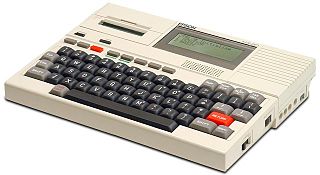 W
WThe Epson HX-20 was the first "true" laptop computer. It was invented in July 1980 by Yukio Yokozawa, who worked for Suwa Seikosha, a branch of Japanese company Seiko, receiving a patent for the invention. It was announced in 1981 as the HC-20 in Japan, and was introduced by Epson in North America as the HX-20 at the 1981 COMDEX computer show in Las Vegas, where it drew significant attention for its portability. It had a mass-market release in July 1982, as the HC-20 in Japan and as the Epson HX-20 in North America. The size of an A4 notebook and weighing 1.6 kg, it was hailed by BusinessWeek magazine as the "fourth revolution in personal computing".
 W
WLifebook is a line of laptop computers made by Fujitsu, which also offers a range of notebooks and tablet PCs within the same Lifebook family.
 W
WThe Gavilan SC was a laptop computer, and was the first ever to be marketed as a "laptop".
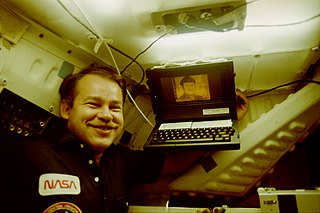 W
WThe Grid Compass was one of the first laptop computers.
 W
WGRiD Systems Corporation was founded in January 1979 by John Ellenby, who left his job at Xerox Parc and joined Glenn Edens, Dave Paulsen and Bill Moggridge to form one of Silicon Valley's first stealth companies. The company went public in March 1981. It was located at 47211 Lakeview Boulevard, Fremont, California, 94537.
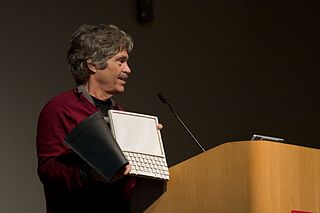 W
WThe history of laptops describes the efforts, begun in 1970, to build small, portable personal computers that combine the components, inputs, outputs and capabilities of a desktop computer in a small chassis.
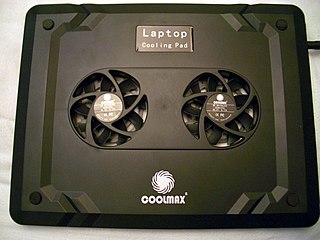 W
WA laptop/notebook cooler, cooling pad, cooler pad or chill mat is an accessory for laptop computers that helps reduce their operating temperature, which is normally used when the laptop is unable to sufficiently cool itself. Laptop coolers are intended to protect both the laptop from overheating and the user from suffering heat related discomfort. A cooling pad may house active or passive cooling methods and rests beneath the laptop. Active coolers move air or liquid to direct heat away from the laptop quickly, while passive methods may rely on thermally conductive materials or increasing passive airflow.
 W
WEarly examples of LG laptops were netbooks: X110, X120 and X130 from 2009.
 W
WEarly examples of LG laptops were netbooks: X110, X120 and X130 from 2009.
 W
WEarly examples of LG laptops were netbooks: X110, X120 and X130 from 2009.
 W
WThe Morrow Pivot II, 1985, was a portable personal computer 100% compatible with IBM PC Software. It was designed by Norman Towson and Micheal Stolowitz, and manufactured by Morrow Designs. With two drives, 320 kilobytes of memory, and a monochrome backlit liquid-crystal display, the Pivot II had a list price of US$1,995.
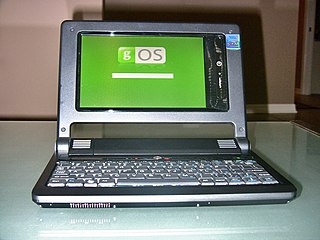 W
WThe NanoBook is an ultra-mobile PC reference design by VIA Technologies, Inc. It has a clamshell form factor, a 7-inch 800×480 touchscreen display, and a full-size keyboard. It weighs less than 850 g and has a claimed battery life of up to 4.5 hours. It is based on the VIA VX700 chipset, featuring the VIA UniChrome Pro II IGP integrated graphics and powered by the 1.2-GHz VIA C7-M ultra low voltage processor. It includes up to 1 GB DDR2 memory, a minimum 30-GB hard drive, 802.11g WiFi, Bluetooth and Ethernet support, as well as a 4-in-1 card reader, a DVI port and two USB 2.0 ports.
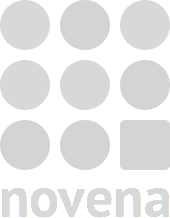 W
WNovena is an open-source computing hardware project designed by Andrew "bunnie" Huang and Sean "Xobs" Cross.
 W
WThe OLPC XO, previously known as the $100 Laptop, Children's Machine, and 2B1, is an inexpensive laptop computer intended to be distributed to children in developing countries around the world, to provide them with access to knowledge, and opportunities to "explore, experiment and express themselves". The XO was developed by Nicholas Negroponte, a co-founder of MIT's Media Lab, and designed by Yves Behar's Fuseproject company. The laptop is manufactured by Quanta Computer and developed by One Laptop per Child (OLPC), a non-profit 501(c)(3) organization.
 W
WThe Statesman was an economy line of notebook computers introduced in 1994 by Packard Bell. They were slower in performance and lacked features compared to most competitor products, but they were lower in price.
 W
WPinebook is a lightweight, low-cost notebook designed and manufactured by the company Pine64. It was announced in November 2016 and production started in April 2017. It is based on the platform of Pine64's existing Pine A64 single board computer and it costs US$89 or US$99 for the 11.6" and 14" model respectively. Its appearance resembles the MacBook Air.
 W
WPrey is a software and online platform for mobile device tracking, management, and protection available for laptops, tablets, and mobiles. The software and service is developed by the Chilean company Prey Inc., successor of the funding company Fork Ltd.
 W
WThe Razer Blade Stealth Series is a laptop lineup from Razer Inc. It was first launched 6 January 2016 during the Consumer Electronics Show alongside the Razer Core, the external graphics box. The product won the CES 2016 Best Laptop Award for its unique design choice of detaching the powerful GPU from the main device and connecting the two via Thunderbolt 3, thus allowing users to choose either power or portability. The current lineup consists of 5 versions of this laptop - 2016, early 2017, late 2017, 2019, and 2020 models - and 3 versions of the Razer Core - Razer Core V1, Razer Core V2, and Razer Core X.
 W
WA subnotebook is a class of laptop computers that are smaller and lighter than a typical notebook.
 W
WThe Surface Laptop is a laptop designed by Microsoft as part of the company's Surface line of personal computing devices.
 W
WToughbook is a trademarked brand name owned by Panasonic Corporation that refers to its line of rugged computers. The Toughbook, introduced in 1996 with the CF-25, is, like most other rugged laptops, designed to withstand outside forces which would normally damage or destroy normal laptops. Toughbook mobile computers are used in a wide variety of industries, including construction, defense, emergency services, government, healthcare, law enforcement, manufacturing, oil, gas, telecom, and utilities.
 W
WA wearable computer, also known as a wearable or body-borne computer, is a computing device worn on the body.
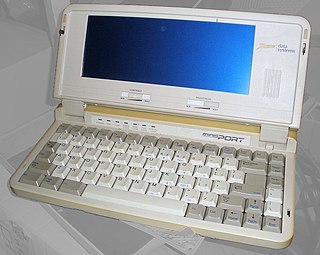 W
WThe Zenith Minisport is a subnotebook based on an 80C88 CMOS CPU running at two software selectable speeds: 4.77 MHz or 8 MHz. It was released in 1989 by Zenith Data Systems (ZDS).